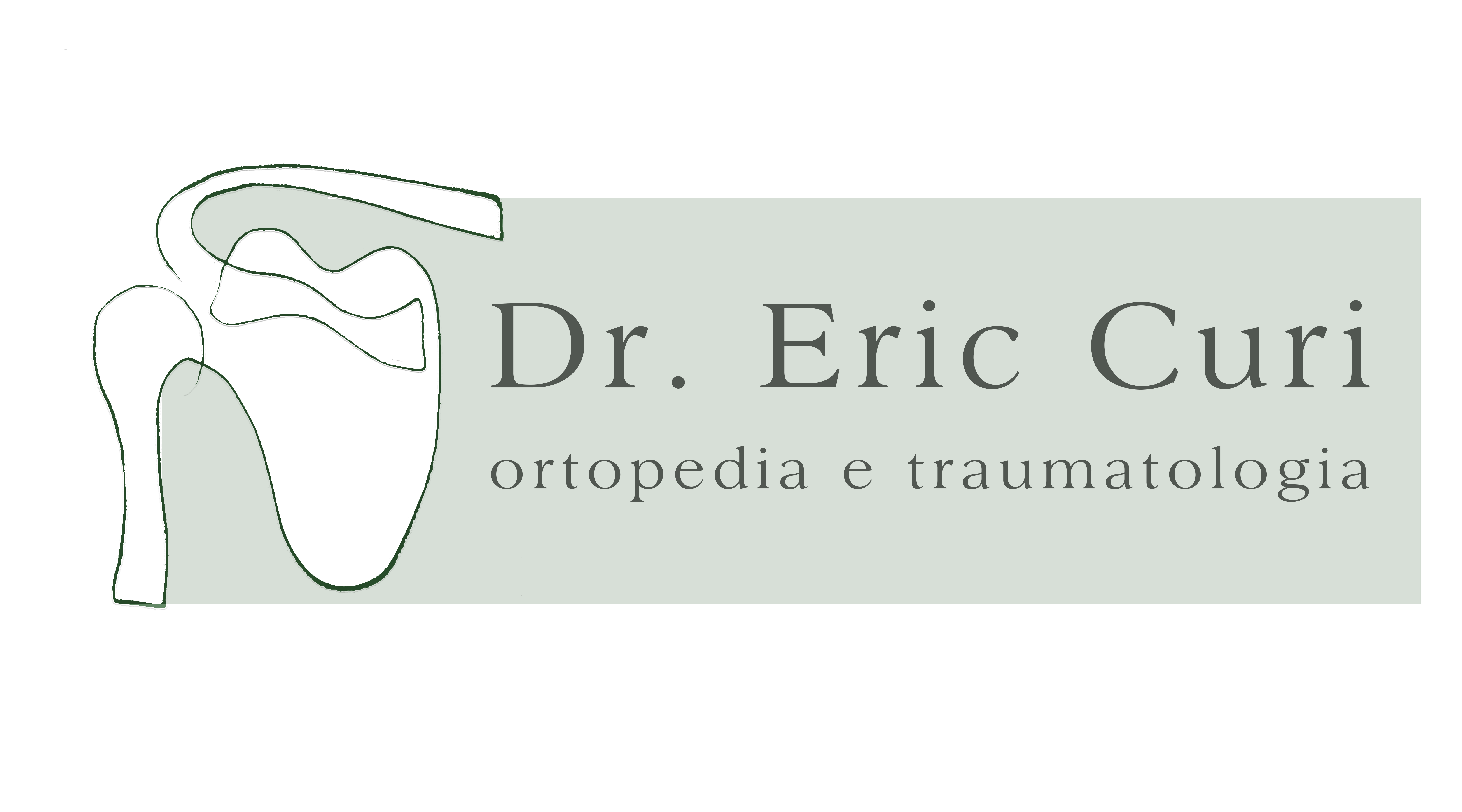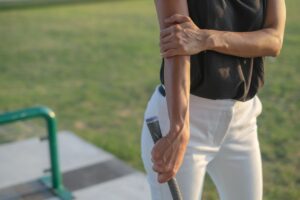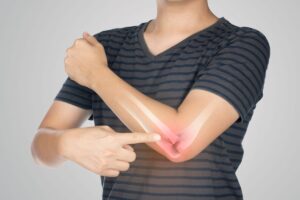Meet Dr. Eric Curi, Orthopedic Surgeon and Traumatologist, specialist in Shoulder and Elbow surgery in São Paulo.
Artrose no ombro
Patologias do Ombro
Patologias do Cotovelo
Ortopedia Geral
Últimos Artigos
Did you know? The famous “bone spurs” (osteophytes) are abnormal bone formations found on the vertebrae of individuals with osteoarthritis in the spine.

Shoulder osteoarthritis, also known as osteoarthritis or degenerative joint disease, is a condition that can significantly affect a patient’s quality of life.
This is a chronic, progressive, and degenerative disease of the joints. It can affect any joint but is more commonly seen in the hips, knees, and the joint between the clavicle and acromion (scapula). In osteoarthritis, the cartilage covering the bones in the joint area is “worn out.” This exposes the bone underneath the cartilage (subchondral bone) and leads to a chronic inflammatory process. This inflammation is actually the body’s failed attempt to repair the issue, resulting in the formation of abnormal bone called osteophytes.
Without this joint cartilage, the bones begin to impact each other directly, causing pain and gradually leading to loss of movement.
If you want to learn more about this condition and how to manage it, here is some additional information. Let’s go!
What is Shoulder Osteoarthritis?
First, we need to understand that the shoulder joint is made up of several essential structures.

The bones are covered by smooth and strong cartilage, allowing them to move without friction and without one bone rubbing against the other.
Additionally, the joint is surrounded by a joint capsule—formed by ligaments—that is filled with synovial fluid. Synovial fluid, our joint lubricant, is crucial for both the nutrition of the joint cells and for the stability of the joint, as well as impact absorption.
When a patient has osteoarthritis, the joint cartilage is worn down. As it deteriorates, the bone beneath it (subchondral bone) becomes exposed, leading to a continuous cycle of inflammation, pain, and reduced range of motion. The synovial fluid also progressively decreases, increasing friction between the bones, worsening cartilage cell (chondrocyte) nutrition, and exacerbating symptoms.
What are the causes of Osteoarthritis?
Osteoarthritis can be classified as primary or secondary. Primary osteoarthritis arises spontaneously and is related to genetic factors and aging. Secondary osteoarthritis results from another condition, such as a previous fracture—where a bone broken at the joint heals incorrectly—or obesity, unstable joints that dislocate and cause injury, or even iatrogenic causes, meaning caused by medical treatment, such as removal of a knee meniscus, which can later lead to osteoarthritis.
Specifically, shoulder osteoarthritis has three main types:

Anterior shoulder x-ray with severe osteoarthritis.

Primary Shoulder Osteoarthritis
Genetics plays an important role. Some people are more prone to developing osteoarthritis due to inherited traits from their parents. Primary glenohumeral osteoarthritis typically shows a classic radiographic sign known as “bony spurs.”
Shoulder Osteoarthritis Due to Trauma or Dislocations:
Traumas like fractures or shoulder dislocations can damage the shoulder joint and lead to osteoarthritis. Even repetitive microtrauma, common in intense physical activities, can be harmful. This is also an issue when an unstable shoulder isn’t treated properly.
Shoulder Osteoarthritis Due to Rotator Cuff Injuries:
Technically known as rotator cuff arthropathy, this type of osteoarthritis is secondary to rotator cuff syndrome. Due to tendon injuries in the rotator cuff, the patient experiences a biomechanical imbalance in the shoulder, causing the joint to stop functioning correctly. Over time, this leads to joint damage and the development of osteoarthritis.
What are the main symptoms?
Shoulder osteoarthritis symptoms can vary, but they typically include pain, stiffness, and limited movement.
Pain is the most common symptom, which may be felt both at rest and during movement. Unfortunately, pain tends to worsen over time and with use of the joint since it is a chronic, progressive condition.
Joint stiffness in the shoulder is another frequent symptom that can make everyday tasks, such as dressing, reaching for high objects, washing hair, and personal hygiene, difficult.
Osteoarthritis can significantly reduce the shoulder’s range of motion, so movements that were once easy can become hard or even impossible.

How is Shoulder Osteoarthritis Diagnosed?
Diagnosing shoulder osteoarthritis involves a combination of clinical history, physical examination, and imaging tests.
After reviewing the patient’s medical history, including disease duration, pain characteristics, limitations, and other complaints, a detailed physical examination is performed. The range of motion, both active (patient performs the movement) and passive (doctor moves the patient’s joint), is assessed, along with pain and limitations in specific tests.
Then, complementary exams are requested. Often, radiographs and MRIs are needed. In some cases, CT scans and ultrasounds are also required. The goal is to understand the bone morphology and any soft tissue damage (ligaments, cartilage, tendons, etc.), confirming the diagnosis. These tests also show the extent of cartilage wear and bone deformity, allowing us to classify the severity of osteoarthritis.
After combining clinical and radiological findings, we can move forward with a targeted and personalized treatment plan.
Treatment for Shoulder Osteoarthritis
Unfortunately, osteoarthritis is a condition that cannot be cured, meaning we cannot reverse the damage that has already occurred.
Thus, treatment depends on the stage of the disease the patient is in.
In cases of early osteoarthritis, treatment aims to slow the joint degradation and manage symptoms. It is essential to understand the underlying cause (etiology) of the osteoarthritis in each patient.
For advanced osteoarthritis, treatment options are more limited, and the prognosis—expectations for the disease’s progression—is more reserved and less optimistic.
In general, treatment options include medications, physical therapy, lifestyle changes, shoulder injections, and surgery.
Medications
Pain relievers, muscle relaxants, and opioids are often prescribed. Non-steroidal anti-inflammatory drugs (NSAIDs) are also used but always for short periods.
Physical Therapy
Specific exercises can help strengthen the muscles around the joint and improve the range of motion. Physical therapy is scientifically supported and effective both for preventing disease progression and, in surgical cases, for preparing the patient for surgery and rehabilitation after.
Lifestyle Changes
Healthy lifestyle habits are the best way to prevent osteoarthritis and slow its progression. Therefore, we always encourage weight control, muscle strengthening, smoking cessation, reducing alcohol use, and managing comorbidities like hypertension and diabetes.
Injections
Injections of medications directly into the joint can help control osteoarthritis progression and/or relieve pain.
Regenerative medicine therapies are the latest trends. There are a few options, but unfortunately, science hasn’t found a magical cure for osteoarthritis. Major options in this area include hyaluronic acid, platelet-rich plasma (PRP), and bone marrow aspiration. These treatments aim to assist in regenerating chondrocytes, the cartilage cells in our joints.
Corticosteroid and anesthetic injections are effective in reducing inflammation and relieving pain but should be used with caution due to potential side effects.
When is Surgery Necessary?

Schematic representation of anatomical total shoulder arthroplasty.
In cases where shoulder osteoarthritis is advanced or conservative treatments do not provide the desired results, surgical treatments are recommended, with shoulder replacement being the primary option.
In this surgery, the damaged or worn parts of the shoulder joint are replaced with artificial components, known as a prosthesis. This procedure is called arthroplasty. There are three main types of shoulder prostheses:
Total Shoulder Prosthesis
Full replacement of the shoulder joint while maintaining its original anatomical shape. A prosthetic component replaces the glenoid (part of the scapula) and another replaces the humeral head (top of the arm bone). This surgery is indicated when there is osteoarthritis in both parts of the joint—the glenoid and the humeral head. For good results, the patient must have a functioning rotator cuff.
Partial Shoulder Prosthesis
Only the humeral head is replaced, keeping the glenoid intact. This surgery is indicated when osteoarthritis is only present in the humeral head and the glenoid is healthy. For good results, the patient must have a functional rotator cuff.
Reverse Shoulder Prosthesis
A type of total prosthesis where both the humeral head and the glenoid are replaced. However, the biomechanical function of the joint is altered. The spherical part of the joint, which naturally belongs to the humerus (arm bone), is placed on the glenoid (scapula), and the slightly concave part, naturally belonging to the glenoid, is placed on the humerus. The reverse shoulder prosthesis has significantly improved outcomes in shoulder surgeries, especially for patients with severe rotator cuff syndrome. This procedure requires good deltoid muscle function, making the rotator cuff a secondary muscle group.

Anterior view of the different types of shoulder arthroplastys.
Recovery for any of these surgeries involves physical therapy, which is crucial for restoring shoulder strength and mobility.
Over time, most patients experience significant pain reduction and improvement in function, allowing them to return to daily activities with greater comfort and ease.
As we’ve seen, shoulder osteoarthritis is a potentially serious condition that can affect quality of life and cause significant consequences for patients. However, with early diagnosis and proper treatment, it is possible to manage symptoms and improve joint function and quality of life.
If you’re experiencing pain or limitations in your shoulder, don’t hesitate to consult with an orthopedic specialist.
Dr. Eric Curi is ready to help you regain your quality of life and well-being. Schedule a consultation and explore our treatment options.
A life without shoulder pain is possible – begin your recovery journey today!
Want to Learn More? Schedule a Consultation with Dr. Eric Curi.
Vila Olímpia
SARTOR - Medicina Integrada
- (11) 3045-2090
- Rua Helena, 218 - Trade Tower - 4º Andar
- Segunda - Sexta : 09:00 -18:00








